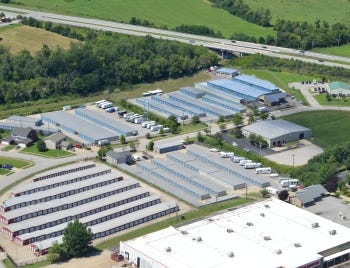One of the most critical decisions in developing a self-storage facility is choosing the site. This article examines key components to consider for site selection and local market factors that can impact project success.
March 30, 2016

One of the most critical decisions in developing a self-storage facility is choosing the right site. The best location depends on a number of factors, and each can influence your decision. Research and an understanding of market conditions are critical in your fact-gathering. Let’s examine some key components to site selection that will help you sharpen your focus on viable opportunities.
Market Conditions
Before deciding on a particular site, you must evaluate local market conditions. If there are existing self-storage facilities in the area, are they full? Can you offer a better product, or are you in position to market your facility more effectively than competitors? Ideally, you want to find a region that’s underserved. For example, areas with new residential construction typically mean increased self-storage demand.
In addition to evaluating existing sites, check with local officials to find out if any other self-storage projects have been approved or are under construction. Once you’ve identified the market you wish to enter, examine multiple prospective locations. Real estate deals often fall through, so it’s wise to have a “plan B” in the works.
 Zoning
Zoning
New self-storage developers often underestimate the difficulty in changing municipal zoning. If at all possible, target parcels that are already zoned to allow self-storage. In many areas, you’ll also need a conditional-use permit, which isn’t normally too difficult to get if you present the planning board with a reasonably attractive plan.
Most municipalities offer zoning maps and regulations on their websites. Identify the zoning type required for self-storage, and then use the map to identify possible locations.
 Visibility and Population Density
Visibility and Population Density

Industry statistics have shown that nearly half of all tenants became aware of their chosen self-storage facility by driving past it. A highly visible location is important, but it’s often costly. Many successful self-storage businesses are built with great visibility from a high-traffic road or freeway but with customer accessibility from a back road or frontage drive. If customers know where your facility is, they’ll seek it out when their need for storage arises.
Some municipalities may not have highly visible land available in areas zoned for self-storage. If competing sites are also in low-visibility areas, this may not be a problem, particularly if the property you’re considering is close to the population base. However, a location with poor visibility will suffer when the competition is highly visible.
Building as close as possible to residential areas helps to increase occupancy. When choosing a facility, most customers will begin their search by contacting the one nearest to their home. As search engines replace phone books, some operators believe proximity to potential clients’ homes has become more important than visibility.
Parcel Size and Cost
The parcel size required for self-storage development varies. You’ll first need to identify what size facility you wish to launch with and outline your potential expansion needs. Consider that after deducting setbacks, driveway space and green space, you’ll typically be able to convert about 30 to 35 percent of a parcel into rentable storage space. If you buy a property that’s too small, you may later wish you had extra land. If you buy one that’s too big, you’ll spend additional money on land—both in purchase price and property taxes—that you may not even need for an extended time.
When buying a larger parcel that enables future expansion, you’ll likely handle a significant amount of the grading during the first phase of building, which will increase the breakeven point. In later phases, the breakeven lowers and cash flow improves. In areas where land is costly or large parcels aren’t available, consider building a multi-story structure or wide buildings with interior corridors.
Parcel Topography and Shape
Compared to many other businesses, self-storage has a lot of flexibility in terms of the type of land on which it can be built. Odd-shaped parcels can often be made to work, and with the right layout and building type, land with elevation changes can even be advantageous.
For example, buildings can be built with steps in either direction or constructed on a sloped foundation to help reduce or eliminate the number of steps needed. If a property features a significant grade change, buildings can be built as “two story into a hill” structures, which allows double the rentable space, with both floors accessible from ground level.
Finding the perfect site can be an exercise in futility since every location tends to require a compromise of some sort. However, with enough searching, many markets offer the opportunity to develop a successful self-storage business.
Steve Hajewski is the marketing manager at Trachte Building Systems, which designs, manufactures and erects a full line of pre-engineered and customized steel self-storage systems, including single- and multi-story, portable storage, interior partition and corridor, and canopy boat/RV. He also owns a self-storage facility in Wisconsin and is a frequent contributor on Self-Storage Talk, the industry's largest online community. For more information, call 800.356.5824; visit www.trachte.com.
About the Author(s)
You May Also Like





